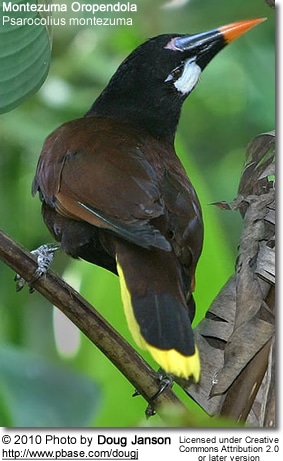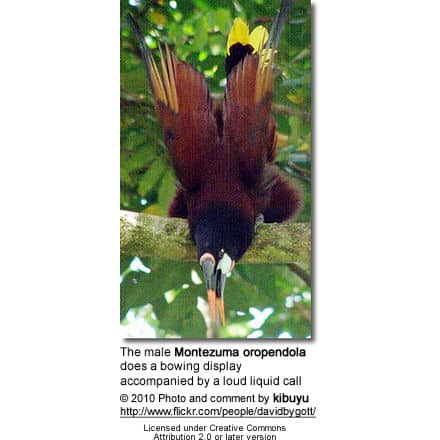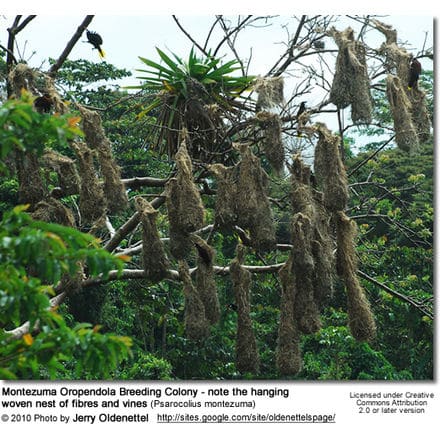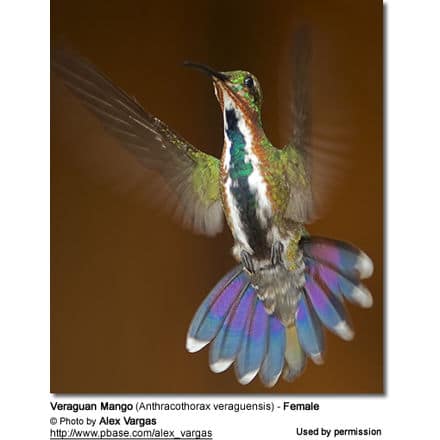Montezuma Oropendolas
Oropendolas

It is among the oropendola species sometimes separated in the genus Gymnostinops. The English and scientific names of this species commemorate the Aztec emperor Moctezuma II.
Distribution / Range
It is a resident breeder in the Caribbean coastal lowlands from southeastern Mexico to central Panama but is absent from El Salvador and southern Guatemala.
It also occurs on the Pacific slope of Nicaragua Honduras and northwestern Costa Rica.
The Montezuma Oropendolas inhabits forest canopy, edges, and old plantations.
Outside the breeding season, this species is quite mobile, with some seasonal movements.
Description
The sexes are very different in size; the male is 50 cm long and weighs 520 g; the smaller female is 38 cm long and weighs 230 g.
Adult males are mainly chestnut with a blackish head and rump, and a tail that is bright yellow apart from two dark central feathers. There is a bare blue cheek patch and a pink wattle, the iris is brown, and the long bill is black at the base with a red tip. Females are similar, but smaller than males with a smaller wattle. Young birds are duller than adults and have a paler and less demarcated bill. No subspecies are currently recognized.
Similar Species: Although the Chestnut-headed Oropendola shares much of this species’s range, it is smaller, mainly black with a chestnut head (instead of mainly chestnut with a blackish head), and lacks colored facial patches, so the two oropendolas are unlikely to be confused.
 Calls / Vocalizations
Calls / Vocalizations
The “unforgettable” (Howell and Webb 1995) song of the male Montezuma Oropendola is given during the bowing display and consists of a conversational bubbling followed by loud gurgles, tic-tic-glik-glak-GLUUuuuuu. Both sexes have loud cack and crank calls.
Diet / Feeding
The Montezuma Oropendolas is a quite common bird in parts of its range, often seen in small or larger flocks foraging in trees for small vertebrates, large insects, nectar, and fruit, including bananas, Cecropia spikes, Gumbo-limbo (Bursera simaruba) and Trophis racemosa (Moraceae).
Breeding / Nesting
It is a colonial breeder which builds a hanging woven nest of fibres and vines, 60–180 cm long, high in a tree.
Each colony has a dominant male, which mates with most of the females following an elaborate bowing display.
The female lays two dark-spotted white or buff eggs which hatch in 15 days; the young fledge in 30. There are typically about 30 nests in a colony, but up to 172 have been recorded.
Copyright: Wikipedia. This article is licensed under the GNU Free Documentation License. It uses material from Wikipedia.org … Additional information and photos added by Avianweb.
Please Note: The articles or images on this page are the sole property of the authors or photographers. Please contact them directly with respect to any copyright or licensing questions. Thank you.

 Calls / Vocalizations
Calls / Vocalizations


